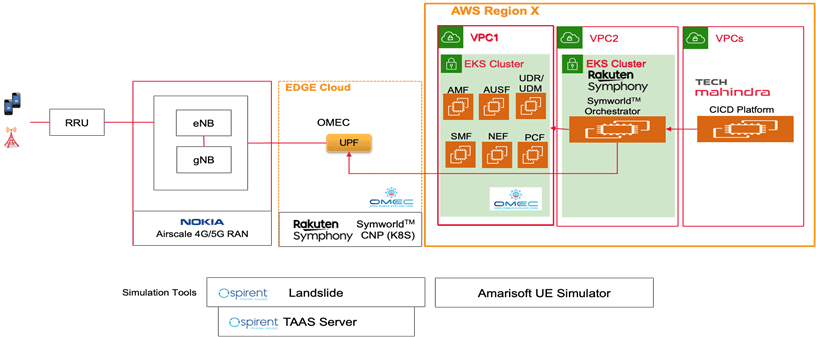The Telecom Infra Project (TIP) is to release a “blueprint”, it says, for how to deploy “cost-effective and scalable” cloud-native private 5G networks, based on an initial trial of a 5G-connected computer vision application led by Telefonica. Rakuten Symphony, Tech Mahindra, and NTT Data are also involved. The project will show how the “economics of private networks can be substantially transformed through technological innovation”, the group said.
The private networks stream within TIP runs in line with its broader industry project to develop open, disaggregated, standards-based public mobile networks. Its private networks solution group, chaired by Telefonica, wants a modular commercial off-the-shelf 5G blueprint solution for enterprises, which does away with the need to make it bespoke each time. “Many deployments today are custom projects that are expensive to implement and maintain,” they said.
 The specified TIP solution, being deployed by Telefonica and co, will adopt a cloud-native platform, as per the TIP modus operandi, that supports virtualized and containerized network functions and extends across the customer premises at the edge and the cloud, creating a hybrid cloud. The deployment uses a disaggregated 5G NSA core for separation of the control and user plane functions (CPF and UPF, CUPF) across edge and cloud.
The specified TIP solution, being deployed by Telefonica and co, will adopt a cloud-native platform, as per the TIP modus operandi, that supports virtualized and containerized network functions and extends across the customer premises at the edge and the cloud, creating a hybrid cloud. The deployment uses a disaggregated 5G NSA core for separation of the control and user plane functions (CPF and UPF, CUPF) across edge and cloud.
The computer vision case requires certain service components, such as video processing and UPF, to be deployed at the edge, close to the application, with a central cloud engaged otherwise – “where possible”. Rakuten Symphony, formerly Robin.io, is providing its Symworld Orchestrator and Symworld Cloud Native Platform (CNP) for the deployment of multiple clusters in the cloud and at the edge.
Its orchestrator mechanism is to manage the deployment of the Kubernetes cluster onto bare metal servers at the edge, and the deployment of both the core UPF and computer vision app. The CNP platform runs lifecycle management for Kubernetes clusters on both edge and cloud servers. The trial is using an open-source automation tool chain to support workflows for the configuration, testing, and operation of software and infrastructure.
Tech Mahindra is handling the integration of open-source tools to orchestrate the component repositories, cloud and edge platforms, and test equipment. NTT Data has integrated and validated the ‘open mobile evolved’ (OMEC) core from the Open Networking Foundation – a process that required creation of a mobile core test plan for private 5G, and development of scripts for different scenarios to trigger tests in the (Spirent) test suite.
The emerging blueprint, the TIP collaborators said, will outline steps to deliver a “cost-effective and scalable” private network service, including on-prem 5G connectivity for business-critical applications, edge compute and storage for the same, centralized management platform for all customer sites, and replicability with the same features across multiple customers. The blueprint also details public cloud-agnostic compute for services with less strict demands.
A couple of videos explain the project (see here and here). Vivek Tiwary, head of global delivery for network services at Tech Mahindra, said: “The cost-effective deployment of private 5G networks at scale requires a comprehensive, automated approach to lifecycle management. Our expertise at network automation and toolchain integration helped bring the solution to life.”
Subha Shrinivasan, vice president in Rakuten Symphony’s unified cloud business unit, said: “Symworld CMP has been an integral part of the TIP private 5G blueprint to… transform private 5G rollout and management for the edge. We are excited that this blueprint will help operators to unlock opportunities to monetize edge deployments.”

